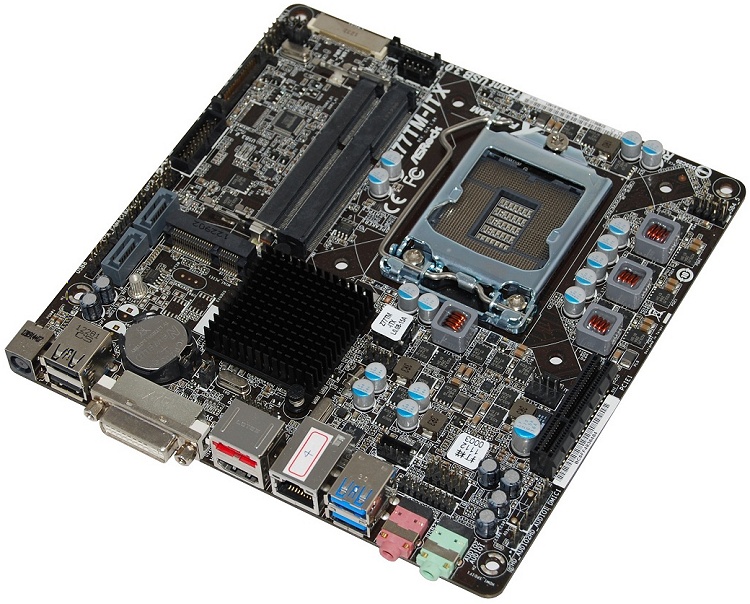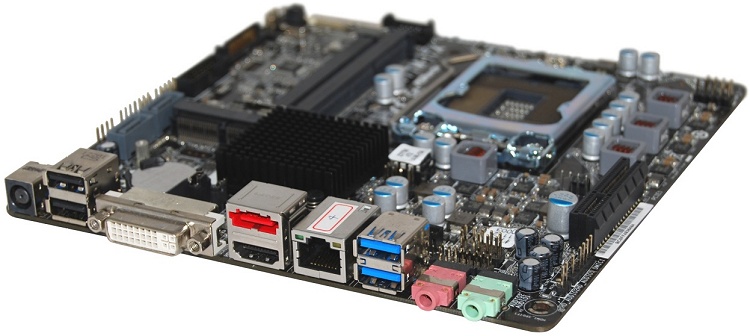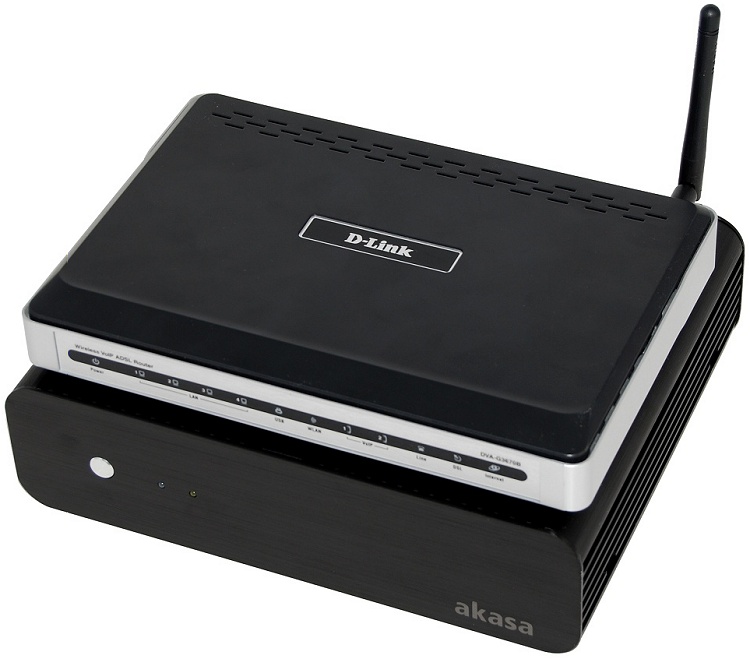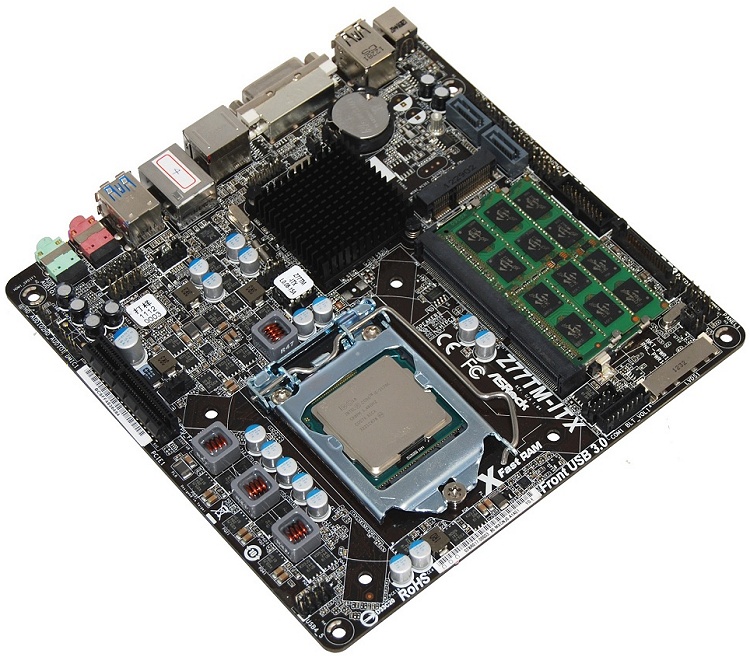Like most other top tier motherboard manufacturers Asrock has a
range of Thin Mini-ITX motherboards on offer. Our motherboard choice,
the Z77TM-ITX is the brand's premium alternative on this form factor,
utilizing the Intel Z77 chipset and able to accomodate 3rd generation
Ivy Bridge processors including the almighty Core i7-3770K.
But then of course we have to think about power and heat output. The Akasa Euler supports a maximum TPD rating of just 35 watts, completely ruling out any Core i7 CPU which range between 45 and 77 watts.


Even most of the Core i5 Ivy Bridge range is rated above the 65 watt
mark, leaving Core i3 processors as the only viable option, with the low
power Core i3-3220T and 3240T rated at 35 watts.
There is however one Core i5 processor which is rated at just 35 watts, though like the Core i3s it's dual-core only. The Core i5-3470T is almost identical to the Core i3-3240T plus the addition of Turbo support. Turbo means that the clock speed can be boosted from 2.9GHz to a healthy 3.6GHz depending on the work load.
The rest of the CPU specifications are in line with what you get from the Core i3 series, meaning there is a 3MB L3 cache and two cores with Hyper Threading for four simultaneous threads. Unfortunately to meet the 35w TDP the Core i5-3470T makes do with the HD Graphics 2500 integrated solution and that means gaming is out of the question.

Getting back to the Asrock Z77TM-ITX motherboard and the Z77 chipset,
out of the box you get features such as dual-channel DDR3, SATA 6Gb/s
and USB 3.0. Asrock has managed to include a pair of SO-DIMM slots
supporting up to 16GB of DDR3 memory. They have also included a pair of
SATA 6GB/s slots which support RAID (RAID 0, 1, 5, 10, Intel Rapid
Storage and Intel Smart Response Technology), NCQ, AHCI and "Hot Plug"
functions.


On-board audio is provided by the Realtek ALC892 Audio Codec which
supports 7.1 CH HD audio with content protection and premium Blu-ray
audio. Then we have Gigabit Ethernet which is provided by another
Realtek chip, the RTL8111E-VL which supports Wake-On-LAN, LAN Cable
Detection, Energy Efficient Ethernet 802.3az and PXE.

Asrock has also included a single PCI Express 3.0 x4 slot though we
don’t imagine many will use it. Perhaps more useful is the mini-PCI
Express slot which can be used for wireless cards, for example.

Moving around to the rear I/O panel we have a DC power input, two USB
2.0 ports, a DVI port, eSATA, HDMI, Gigabit Ethernet, two USB 3.0 ports
and two audio jacks.
<< First < Previous > Next >> Last
But then of course we have to think about power and heat output. The Akasa Euler supports a maximum TPD rating of just 35 watts, completely ruling out any Core i7 CPU which range between 45 and 77 watts.


There is however one Core i5 processor which is rated at just 35 watts, though like the Core i3s it's dual-core only. The Core i5-3470T is almost identical to the Core i3-3240T plus the addition of Turbo support. Turbo means that the clock speed can be boosted from 2.9GHz to a healthy 3.6GHz depending on the work load.
The rest of the CPU specifications are in line with what you get from the Core i3 series, meaning there is a 3MB L3 cache and two cores with Hyper Threading for four simultaneous threads. Unfortunately to meet the 35w TDP the Core i5-3470T makes do with the HD Graphics 2500 integrated solution and that means gaming is out of the question.





<< First < Previous > Next >> Last










